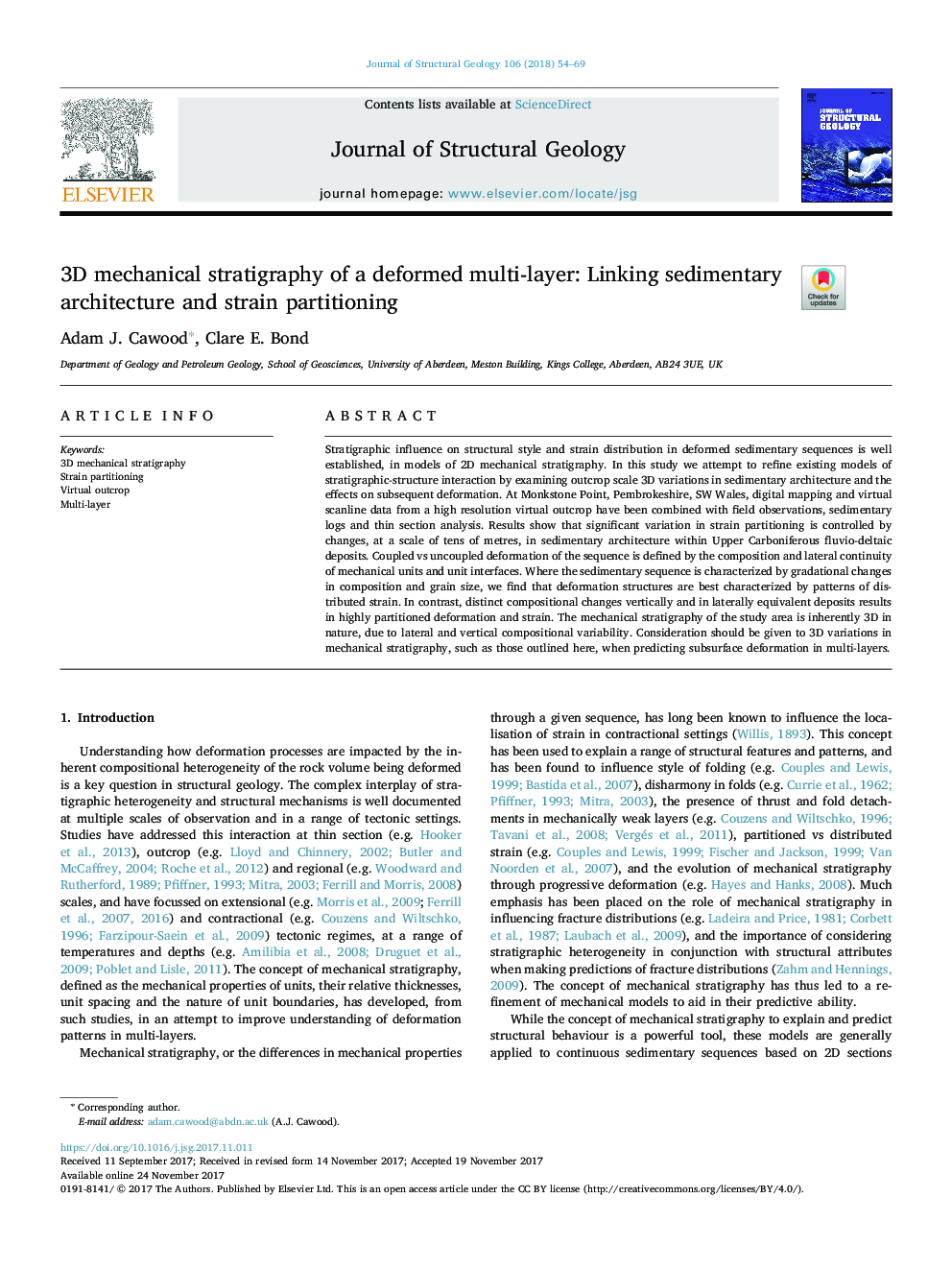| Article ID | Journal | Published Year | Pages | File Type |
|---|---|---|---|---|
| 8914531 | Journal of Structural Geology | 2018 | 16 Pages |
Abstract
Stratigraphic influence on structural style and strain distribution in deformed sedimentary sequences is well established, in models of 2D mechanical stratigraphy. In this study we attempt to refine existing models of stratigraphic-structure interaction by examining outcrop scale 3D variations in sedimentary architecture and the effects on subsequent deformation. At Monkstone Point, Pembrokeshire, SW Wales, digital mapping and virtual scanline data from a high resolution virtual outcrop have been combined with field observations, sedimentary logs and thin section analysis. Results show that significant variation in strain partitioning is controlled by changes, at a scale of tens of metres, in sedimentary architecture within Upper Carboniferous fluvio-deltaic deposits. Coupled vs uncoupled deformation of the sequence is defined by the composition and lateral continuity of mechanical units and unit interfaces. Where the sedimentary sequence is characterized by gradational changes in composition and grain size, we find that deformation structures are best characterized by patterns of distributed strain. In contrast, distinct compositional changes vertically and in laterally equivalent deposits results in highly partitioned deformation and strain. The mechanical stratigraphy of the study area is inherently 3D in nature, due to lateral and vertical compositional variability. Consideration should be given to 3D variations in mechanical stratigraphy, such as those outlined here, when predicting subsurface deformation in multi-layers.
Keywords
Related Topics
Physical Sciences and Engineering
Earth and Planetary Sciences
Geology
Authors
Adam J. Cawood, Clare E. Bond,
